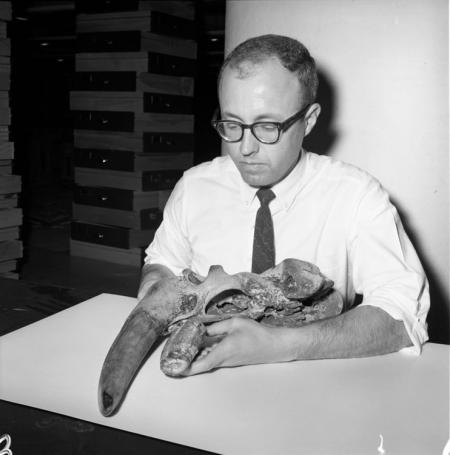
Princeton University Library has a detailed online exhibit on the early maps of New Jersey. Lots of historic maps you can zoom in on and examples of historic surveying equipment.
You begin to interest me…vaguely

Princeton University Library has a detailed online exhibit on the early maps of New Jersey. Lots of historic maps you can zoom in on and examples of historic surveying equipment.
Inspired by a bad experience at Disneyland (no, nothing to do with measles), Leatherman will introduce the Tread, a combination bracelet and set of tools. The bracelet is customizable and you can mix and match the usual assortment of screwdrivers, wrenches, and so on. An actual watch face will be available later. Coming this summer for around $150.

We don’t usually deal in real estate, but a striking house designed by architect Louis Kahn has just come up for sale. Kahn designed nine houses that were built around Philadelphia; this one is in Cherry Hill, New Jersey.
The Clever House is named for the clients/owners, who sought out Kahn after seeing his Trenton Bath House (according to Curbed).

Yes, it needs work (but a couple hours of raking would make the outside look so much better), but it’s under $300,000 and the property taxes aren’t too horrible (for New Jersey). And gotta love the cinder block style on the inside.

Photos are from the Real Estate Listing.
More on this house and all of Kahn’s other residential projects here.
Blizzards of historic proportions are not all bad:
One more quote from paleontologist Clayton E. Ray, this time on the epistemology of identifying animal bones:
“… the techniques [of comparative methodology, i.e., comparing unknowns to knowns] were not codified and universally applied until the nineteenth century under the influence of Cuvier, Owen, and Agassiz. This could not have occurred prior to the Age of Enlightenment/Reason, with the spread of the notion that all problems could be successfully solved through intensive inspection and that ordinary humans could rely on their own careful observations irrespective of authority.[emphasis added] … Until recently, this reliance was taken for granted, so much so that the sublime notion could be expressed profanely, if I may be permitted one homely example: Remington Kellogg, once asked by a colleague what criteria allowed him to conclude that a certain fragmentary whale vertebra was in fact identifiable to a particular species, immediately replied resoundingly, “because it looks like it, goddamit it!” He did not live to experience the postmodern entry of doubt introduced by phylogenetic systematics and social constructivism, in which we question the meaning of all our observations.” (p.7)
More from Clayton E. Ray:
discoveries do not stay discovered; they must be tended like a garden. (p. 15)
approach to truth is a fragile dynamic that requires continual vigilance. There may be some validity to Gould’s (1996:110) claim that “persistent minor errors of pure ignorance are galling to perfectionistic professionals,” but this has no bearing on the overriding requirement that each professional strive assiduously to get things right and never knowingly let even “minor errors” persist.(p. 16)
Reference:
Clayton E. Ray 2001. Prodromus. In Geology and Paleontology of the Lee Creek Mine, North Carolina, III. Edited by C.E. Ray and D.J. Bohaska. Smithsonian Contributions to Paleobiology, number 90:1-20.
I don’t think I have ever read an introduction to a collection of paleontology papers that had more gems than Clayton E. Ray’s “Prodomus” to a volume on Miocene/Pliocene Lee Creek Mine locality. Like this:
Having flattered myself that I had unearthed essentially everything, it is salutary to be reminded through several oversights that in antiquarian, as in paleontological, research one can never do too much digging. Returns in each are apt to be unpredictable and to be meager in relation to time invested (hardly “cost effective”), but there will always be something new, and, to comprehend it when found, one must be steeped in the subject. (p. 1)

Reference:
Clayton E. Ray 2001. Prodromus. In Geology and Paleontology of the Lee Creek Mine, North Carolina, III. Edited by C.E. Ray and D.J. Bohaska. Smithsonian Contributions to Paleobiology, number 90:1-20.
Kelli Marshall over at the Chronicle has a clear, succinct guide to managing your professional identity. It’s aimed at academics and seems pretty up to date (Strikingly? Never heard of it) . But why no love for academia.edu?